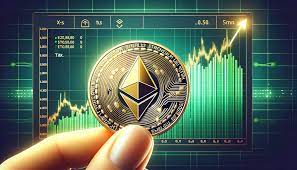Ether price gained 13.5% between Jan. 10 and Jan. 12, breaking above $2,650 for the first time since May 2022. The pivotal factor for the rally has been the spot Bitcoin (BTC) exchange-traded fund approval, although the leading cryptocurrency traded down 2% in the same period. Investors are now questioning if Ether (ETH) has what it takes to sustain its current $322 billion market capitalization.

In the past 60 days, Ether price has gained 27%, outpacing Bitcoin’s 24% positive move in the same period — quite a feat considering that the spot BTC approval was expected to catapult its price as it opens room for a whole new set of clients who could not acquire cryptocurrency directly. Furthermore, Bloomberg ETF analysts hold 70% odds of an Ethereum ETF approval by May, as opposed to their 95% chances for Bitcoin.
BlackRock, Fidelity, Grayscale, VanEck and other asset managers expect the final U.S. Securities and Exchange Commission deadline on the spot Ethereum ETF decision by May 23, but given that Bitcoin already paved the way, some analysts believe the final answer might come sooner than anticipated. For instance, the SEC has intermediary deadlines in late January for some of the applicants.
Ethereum competitors have lost momentum
Given that Bitcoin’s spot ETF approval had a dismal price impact, one should conclude that Ether’s bullish momentum has been driven by other factors. For starters, Ethereum’s direct competitors faced a correction after expressive rallies. BNB (BNB) declined 2% in the seven days leading up to Jan. 12, while SOL (SOL) dropped 3% in the same period.
In SOL’s case, the bullish momentum faded after the extremely successful SPL token airdrops — including JITO, BONK and WIF — faced 40% and higher price corrections. Moreover, much of the decentralized applications (DApps) activity gain seemed to be concentrated on a handful of projects that had imminent token launches, which also faded after the respective snapshots. Consequently, investors’ appetite for Solana’s SOL token started to diminish.
BNB faced impressive and unexpected 35.7% gains between Dec. 17 and 27, 2023, but the bullish momentum was not accompanied by network activity. In fact, in the seven days ending Jan. 12, BNB Chain’s active DApp addresses declined by 61%, while the number of transactions plunged by 64%, according to DappRadar. As a comparison, Ethereum faced a 2.2% decline in active addresses and 0.3% fewer volumes in the same period.

Regardless of how the nonfungible token (NFT) markets are depressed relative to the 2021 peak, Ethereum’s network remains the undisputed leader in value, including the leading collections — CryptoPunks, Bored Ape Yacht Club, Pudgy Penguins and Azuki. In essence, those using Ethereum decentralized finance (DeFi) applications and top NFT assets are not worried about a $6.30 average transaction fee.
Ethereum staking and DApp activity remain resilient
Ether’s price has also benefited from its 4.3% annualized staking reward and a slightly negative issuance rate. Almost 24% of the entire circulating ETH supply is locked up while participating in the network’s validating process, which fuels investors’ expectations toward its price. In comparison, Solana’s adjusted staking reward is 0.8% due to its high SOL issuance rate.
Related: Spot Bitcoin ETF approved in the US–What to expect next
The Ethereum network is expected to undergo a hard fork that would mark a significant advancement in its technological capabilities. Focused on increased data availability and reduced costs for rollup transactions, the “Dencun” fork has its first testnet implementation scheduled for Jan. 17. Another anticipated improvement is account abstraction, which enables reduced transaction costs and secure social logins.
Ethereum’s limited capacity to scale and implement privacy solutions in the base layer has been a constant source of criticism; thus, it makes sense to smooth the process of accessing its second layers in terms of user experience and costs. Therefore, Ether’s rally above $2,600 has less relationship to the spot ETF approval than it meets the eye, as the network remains dominant in the smart contract industry.
This article does not contain investment advice or recommendations. Every investment and trading move involves risk, and readers should conduct their own research when making a decision.










